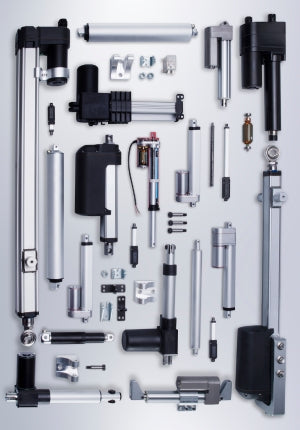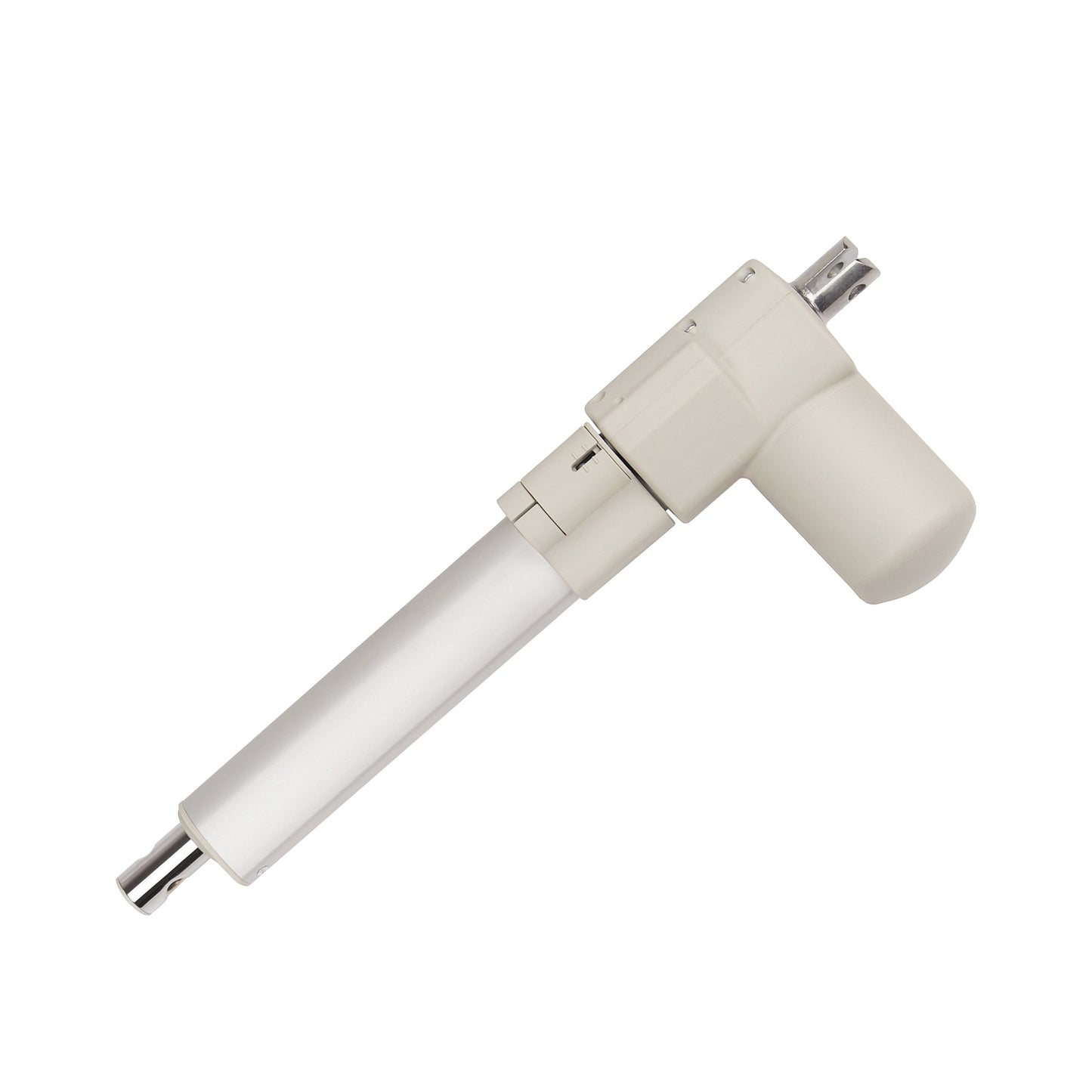
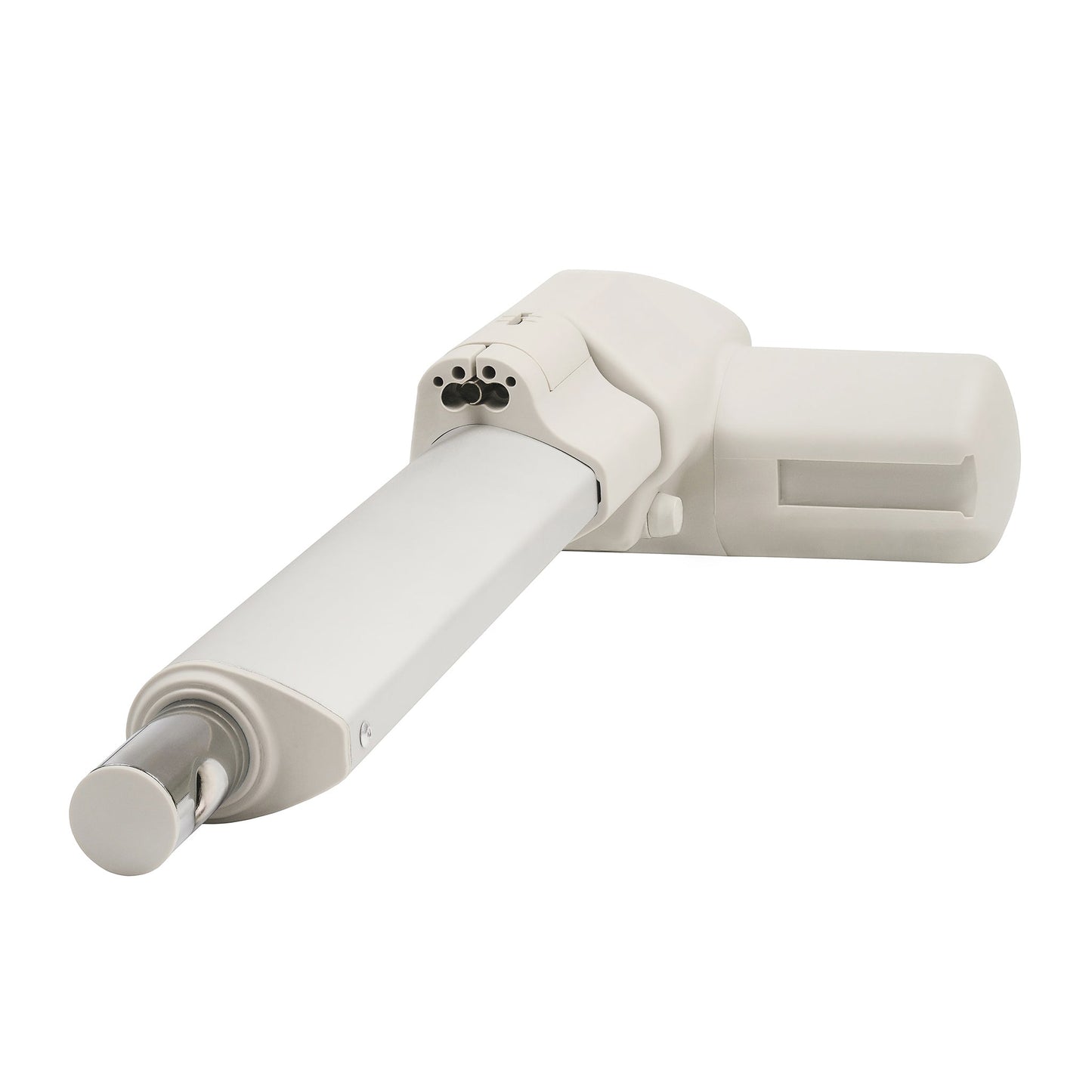
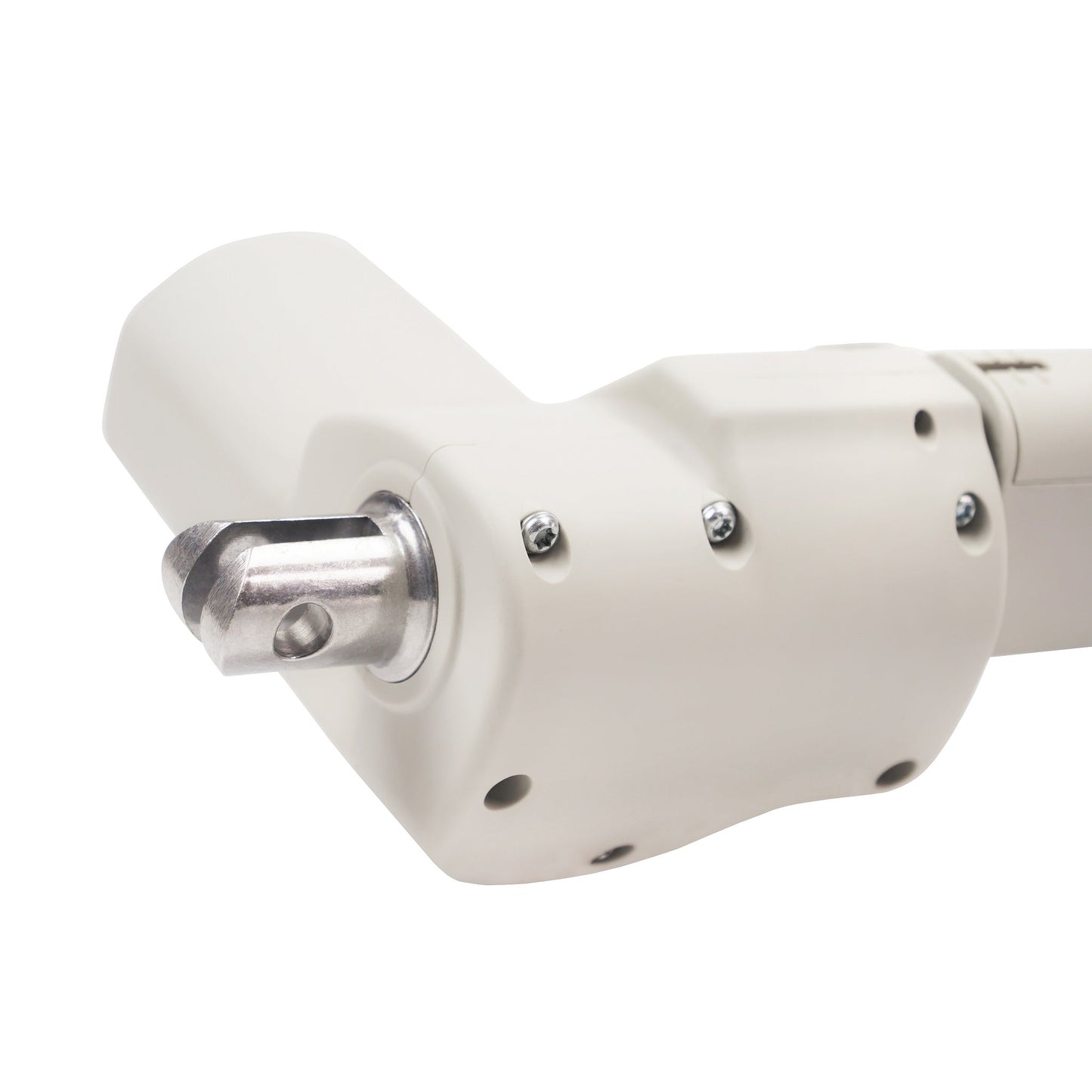
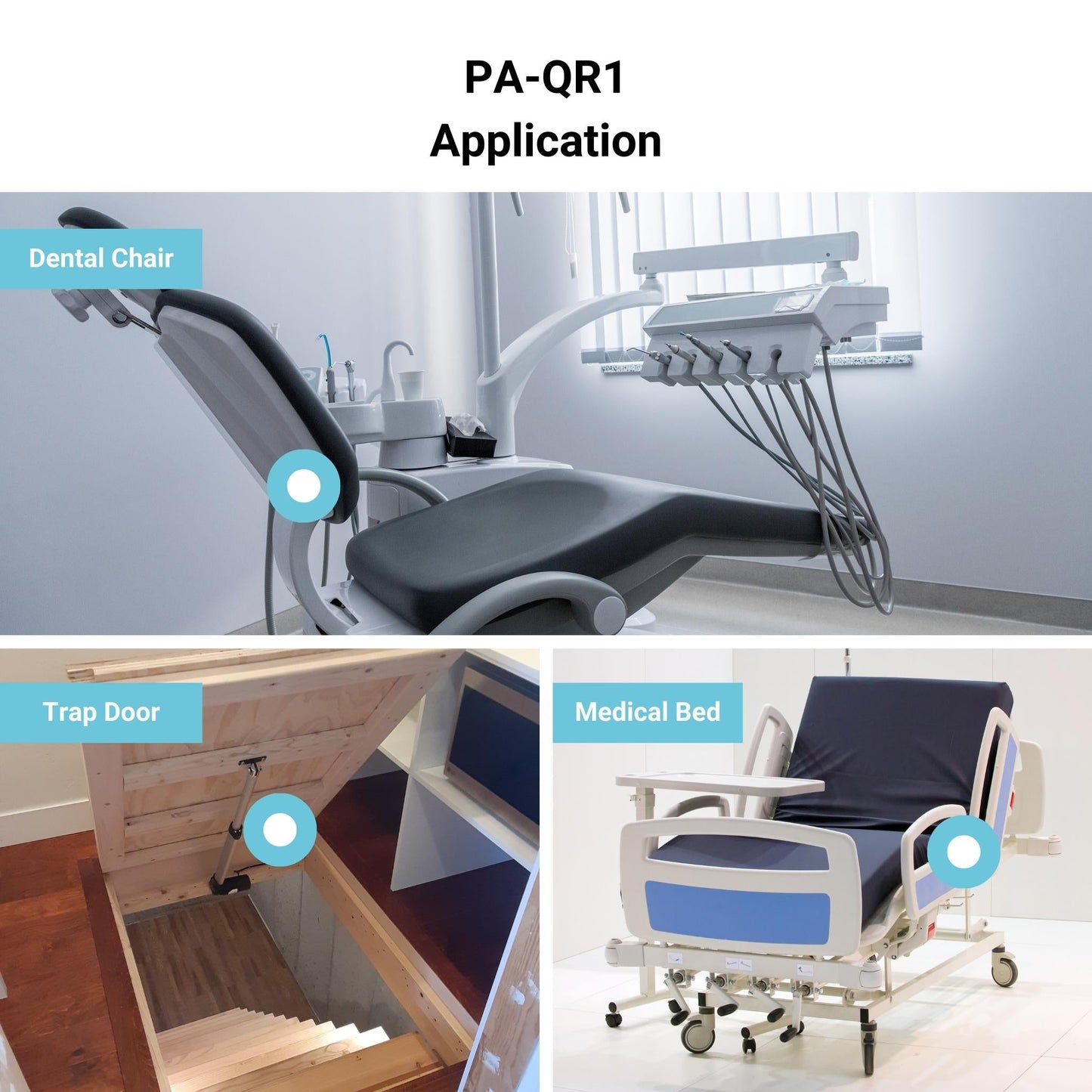
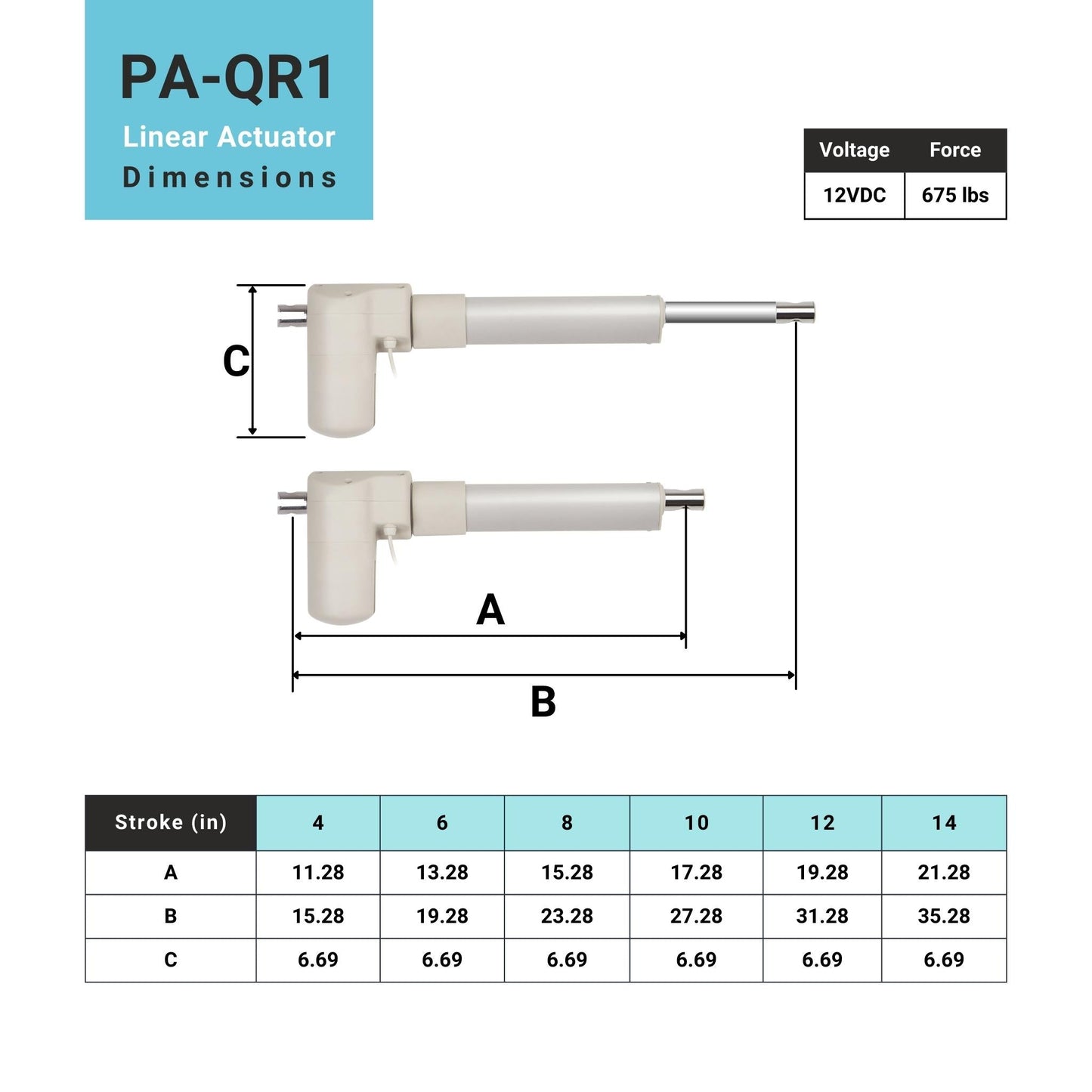
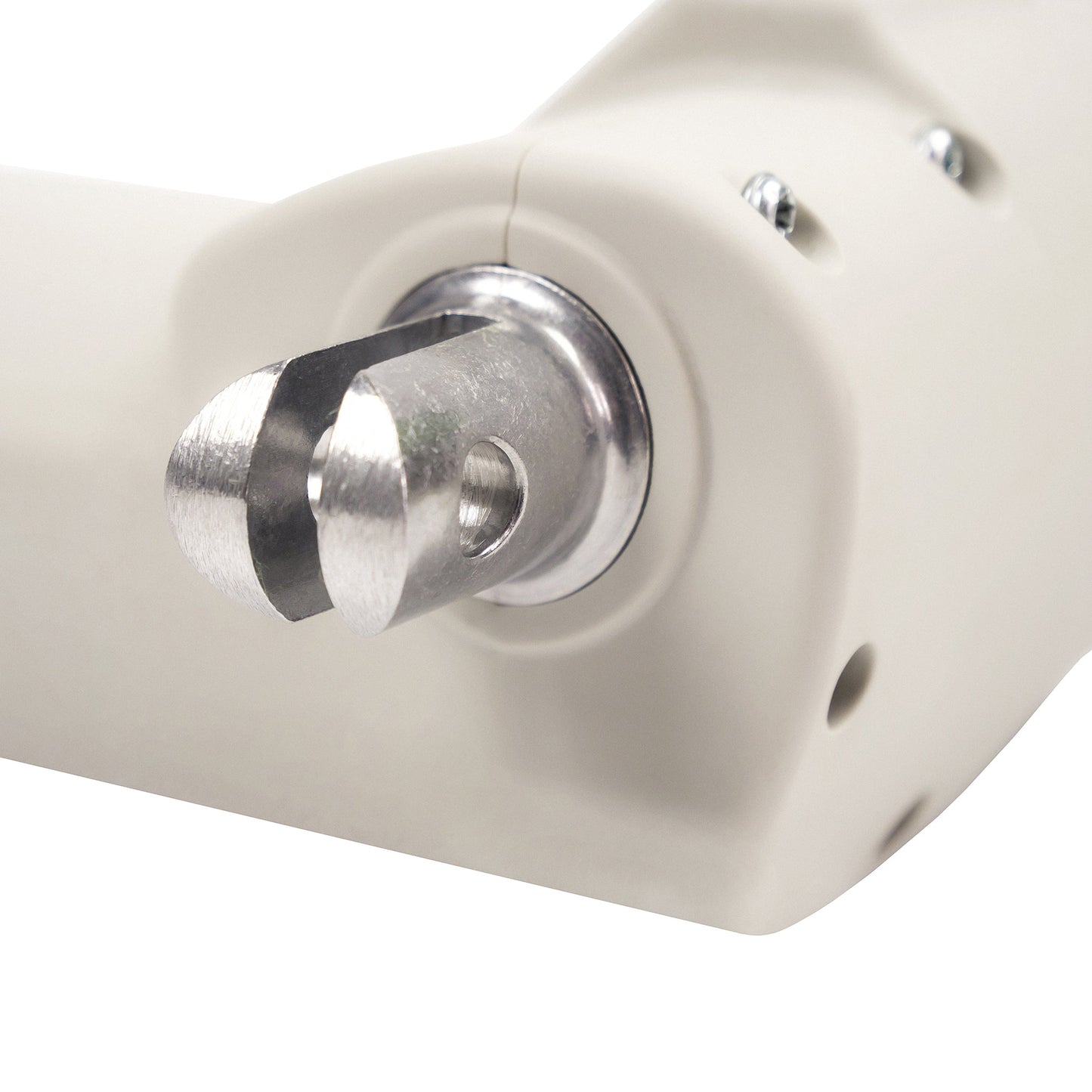
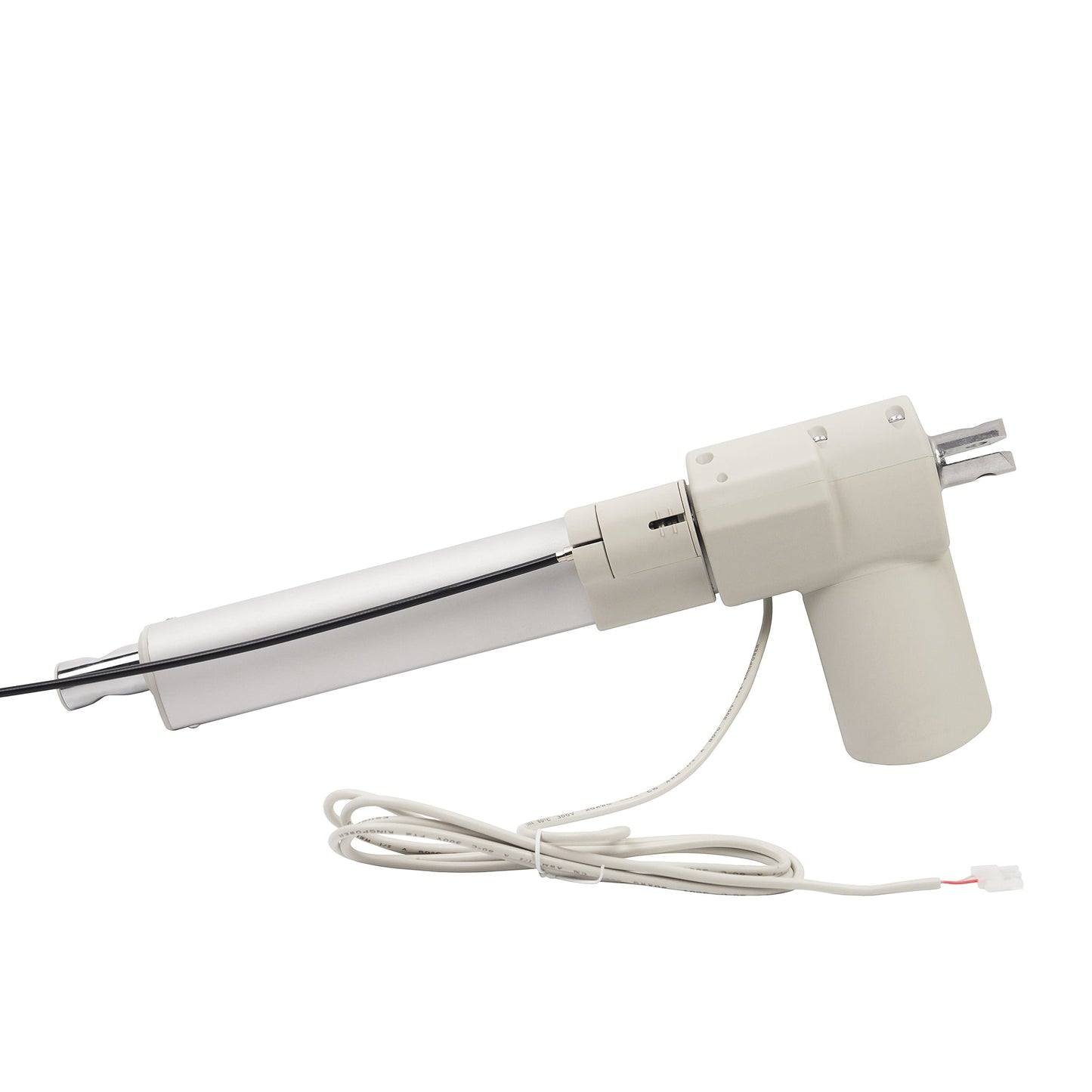
PA-QR1 Specifications
The PA-QR1 is a quick release actuator, offering added safety and quick movement to any application. We’ve specifically designed this unit to overcome common challenges found in many quick release actuator solutions, such as:
- Mechanical Wear and Tear: Many mini actuators are prone to early mechanical failures over time. The PA-QR1 actuator addresses this with robust construction and quality motors designed for longevity.
- Safety Features: Built-in limit switches ensure the actuators automatically shut off electrical power when reaching the end of full retraction and extensions.
- Water Ingress and Seals: Advanced seals in the PA-QR1 actuator provide robust protection against ingress, extending the actuator's life in a wide range of outdoor environments.
Key Benefits and Features of the PA-QR1
- High Force Ratings: Designed with reliability and versatile capabilities to handle 3003 N dynamic and 4450 N static force ratings.
- Durable Construction: Built with long-lasting materials, including a 304 stainless steel stroke rod and PA66 + 33GF housing, ensuring reliable performance even in harsh conditions.
- Weather Protection: Rated IP66, offering high protection against dust and water, making it suitable for a wide range of outdoor environments.
- Quick Release Mechanism: The cable pull-style quick release allows for the option to have manual movement in the event of an electrical power outage.
- Integrated Limit Switches: Built-in, non-adjustable limit switches ensure precise control of the actuator's motion, enhancing safety and reliability.
PA-QR1 Specifications
The PA-QR1 is a quick release actuator, offering added safety and quick movement to any application. We’ve specifically designed this unit to overcome common challenges found in many quick release actuator solutions, such as:
- Mechanical Wear and Tear: Many mini actuators are prone to early mechanical failures over time. The PA-QR1 actuator addresses this with robust construction and quality motors designed for longevity.
- Safety Features: Built-in limit switches ensure the actuators automatically shut off electrical power when reaching the end of full retraction and extensions.
- Water Ingress and Seals: Advanced seals in the PA-QR1 actuator provide robust protection against ingress, extending the actuator's life in a wide range of outdoor environments.
Key Benefits and Features of the PA-QR1
- High Force Ratings: Designed with reliability and versatile capabilities to handle 3003 N dynamic and 4450 N static force ratings.
- Durable Construction: Built with long-lasting materials, including a 304 stainless steel stroke rod and PA66 + 33GF housing, ensuring reliable performance even in harsh conditions.
- Weather Protection: Rated IP66, offering high protection against dust and water, making it suitable for a wide range of outdoor environments.
- Quick Release Mechanism: The cable pull-style quick release allows for the option to have manual movement in the event of an electrical power outage.
- Integrated Limit Switches: Built-in, non-adjustable limit switches ensure precise control of the actuator's motion, enhancing safety and reliability.
Following a set of standards is crucial for businesses to ensure their products and services can meet a level of quality that promotes customer satisfaction. At Progressive Automations, we aim for nothing but the best for our customers and strive toward continual improvements. Because of this, we are excited to announce that Progressive Automations is now ISO 9001:2015 certified!
Quality You Can Trust – Learn MoreVideos
Related blog articles:







